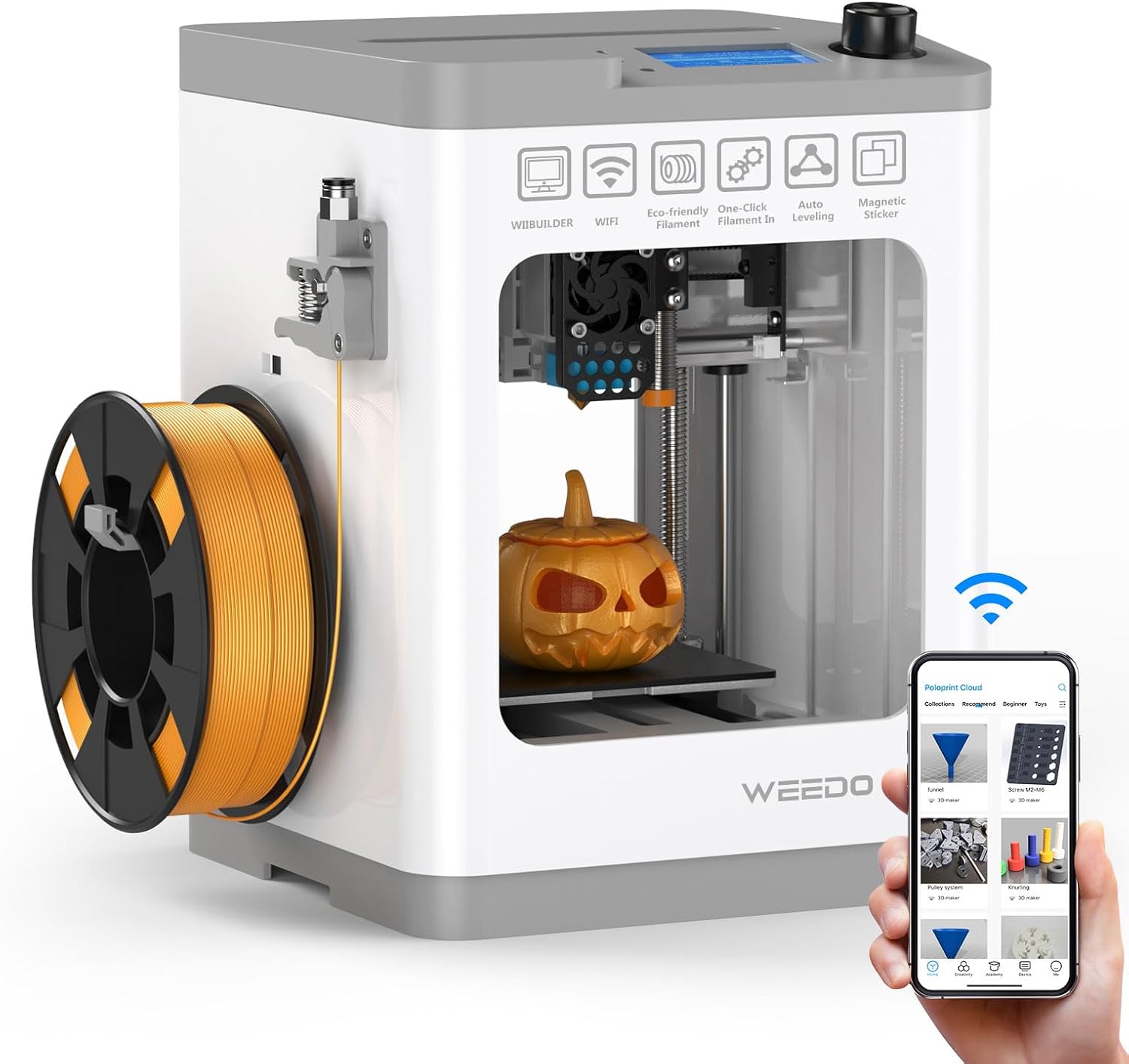






Price: $229.99
(as of Apr 03, 2025 08:57:34 UTC - Details)
The Best 3D Printer: Your Ultimate Guide to Choosing the Right One
Introduction
In recent years, 3D printing has revolutionized the way we think about manufacturing, design, and creativity. Whether you're an artist, engineer, or hobbyist, having the best 3D printer can significantly enhance your projects. But with so many options on the market, how do you choose the right one? In this comprehensive guide, we will explore the best 3D printers available, focusing on various long-tail keywords that will help you make an informed decision. By the end of this article, you'll be equipped with all the knowledge you need to select the perfect 3D printer for your needs.
Understanding 3D Printing Technology
What is 3D Printing?
3D printing, also known as additive manufacturing, is the process of creating three-dimensional objects from a digital file. This technology allows you to produce complex shapes that are difficult or impossible to create with traditional manufacturing methods. Understanding the basics of how 3D printers work is essential for selecting the best one for your projects.
Types of 3D Printing Technologies
There are several types of 3D printing technologies, including FDM (Fused Deposition Modeling), SLA (Stereolithography), and SLS (Selective Laser Sintering). Each technology has its unique benefits and drawbacks, making it crucial to understand which type aligns best with your requirements.
Key Features to Look for in a 3D Printer
Build Volume: What You Need to Know
When searching for the best 3D printer, one of the first things to consider is the build volume. This refers to the maximum size of the object that can be printed. A larger build volume allows for bigger projects, while a smaller one is more suitable for detailed miniatures.
Print Speed
Print speed is another critical factor. It determines how quickly a 3D printer can produce an object. If you plan to create multiple items or work on large projects, a printer with a higher speed will save you valuable time.
Resolution and Layer Height
The resolution of a 3D printer is measured in microns, with lower numbers indicating finer detail. Layer height also plays a significant role in the final appearance of your print. A printer with adjustable layer heights gives you more flexibility in achieving the desired finish.
The Best 3D Printers for Beginners
User-Friendly 3D Printers
If you're new to 3D printing, a user-friendly printer is essential. Look for models that offer easy setup, intuitive controls, and reliable performance. Brands like Creality and Anycubic are known for their beginner-friendly options that won’t overwhelm you with complicated features.
Affordable Options
Budget is always a concern. Fortunately, there are several affordable options that still deliver quality prints. Printers like the Ender 3 or the Monoprice Select Mini provide excellent value for money while being straightforward to use.
Advanced 3D Printers for Professionals
High-End Features
For the more experienced user, advanced features can significantly enhance your printing experience. Look for printers with dual extrusion capabilities, which allow for multi-material prints, or those with heated beds for better adhesion.
Material Compatibility
A professional-grade 3D printer should be compatible with a wide range of materials, including PLA, ABS, PETG, and even specialty filaments like nylon or flexible materials. This versatility opens up new possibilities for your projects.
Best 3D Printers for Specific Applications
3D Printers for Prototyping
If you're in a field that requires rapid prototyping, certain printers excel in this area. Look for models that offer high precision and speed, like the Prusa i3 MK3S. These printers can help you quickly iterate designs and bring your ideas to life.
3D Printers for Educational Purposes
In educational settings, ease of use and safety are paramount. Printers designed for schools often come with features like enclosed chambers and automatic bed leveling. Brands like Dremel and Tinkercad provide excellent options that cater specifically to educational needs.
Maintenance and Support for Your 3D Printer
Regular Maintenance Tips
Owning a 3D printer requires some level of maintenance to keep it running smoothly. Regularly check the nozzle for clogs, clean the print bed, and ensure that all components are tight and functioning correctly.
Where to Find Support
When issues arise, reliable customer support can make all the difference. Consider brands that offer extensive resources, such as online forums, troubleshooting guides, and responsive customer service.
Conclusion
Choosing the best 3D printer involves careful consideration of your specific needs and preferences. From understanding different printing technologies to evaluating key features like build volume and print speed, this guide has provided the essential information you need. Whether you're a beginner or a professional, there’s a perfect 3D printer out there for you. Remember, the right printer can greatly enhance your creative endeavors, making it a worthwhile investment. Happy printing!
